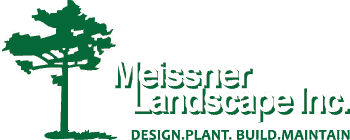Watching birds around your home can be a relaxing, entertaining and educational activity for the entire family.
To make bird watching even more enjoyable consider ‘landscaping for the birds’. This will involve the development of a habitat that is more conducive to attracting and viewing birdlife. You will need to supply food, cover, water and nesting to meets their basic requirements.
Food
Feeding birds is crucial in attracting them. Feeders will need to be placed close to cover, yet with open access for landing. While these feeders provide food for seed-eaters, you will also need to supply food for insect and fruit eating birds to enjoy a wider variety of visitors. Dogwoods, crabapples, serviceberries and viburnums are a few of many readily available plant varieties that can provide this needed fruit. There are also a number of plants that not only harbor insects, but supply food for ‘insect feeders’ as well.
Some plant species will provide food during the early season while others will provide mid, late, and even a winter food source.
Cover
Different birds require different amounts of cover. The larger variety of plants you are able to have on your property, the more diverse group of avian visitors you are likely to attract. Evergreens can supply year round protection, while dense thickets or thorny plants like shrub roses can provide a hiding place from predators.
Nesting
In addition to cover, nesting sites and materials are needed to accommodate birds. Many of the plants that provide cover also make excellent nesting sites. Blackhaw viburnums and hawthorns are two examples.
Birds also use a variety of materials for constructing their nests. Consider leaving an area in your design where twigs or other natural yard waste can accumulate without being immediately cleaned up. Fluffy seed heads from milkweed or ornamental grasses, and strips of bark from birch or cedar trees that you have thoughtfully incorporated in your yard, increases the likelihood of having a nestfull of babies outside your window.
Water
Birds require water for both drinking and grooming. A bird bath or small pond will provide an excellent source for both. Birds will drink water throughout the year if a heater is used to prevent the water from freezing.
Running or dripping water is particularly attractive to birds, the noisier the better. This alerts birds that you have water available. Designing small waterfalls or ponds into your landscape is bird friendly.
The overall design for your birdscape is very important. Ideally you should do the planting in tiers. The upper canopy is used for roosting and nest building by certain species like hawks and orioles. The mid levels are used by birds such as woodpeckers and catbirds and consists of shrubs and small trees. The lower ground level, where you plant small shrubs and perennials, will attract species like robins, juncos and doves.
All three levels need to be considered when planning and planting your yard. You will also need to consider the view from inside your house.
The main item you need to get started is a master plan with details of the layout and what plantings you would use. Once you have established this, the garden can be constructed over a period of time.
If you are interested in a detailed list of plants that are useful in providing food, cover and nesting let us know and we will be happy to get you a copy.

